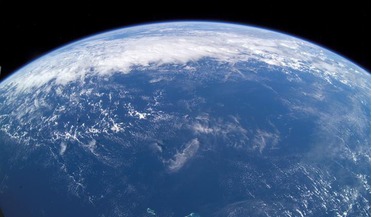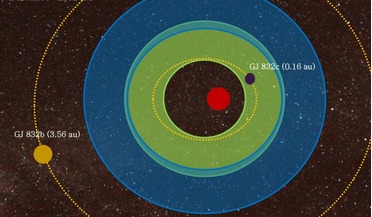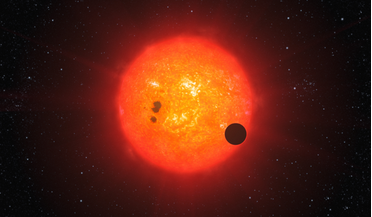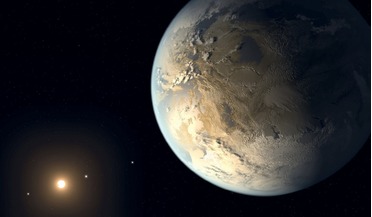 09 November 2018
Leftover gas from the Sun's birth created Earth's water
09 November 2018
Leftover gas from the Sun's birth created Earth's water
.... Although we have only scratched the surface in our hunt for Earth-like worlds in other exo-systems, many of the 3,800 planets we’ve found so far appear to be rocky bodies not significantly different from our own. If this is indeed how...
 18 August 2017
A new Earth-like planet may have been found as close as 16 light years away
18 August 2017
A new Earth-like planet may have been found as close as 16 light years away
... the time evolution of orbital parameters to generate the synthetic radial velocity curves of the known and the Earth-like planets in the system," said Satyal. "We obtained several radial velocity curves for varying masses and distances indicating...
 May 2018
PLATO the habitable zone explorer
May 2018
PLATO the habitable zone explorer
... concept. Due to launch in 2026, PLATO will revolutionise exoplanet science. The mission will find Earth-like planets in the habitable zone of Sun-like stars. But who knows what else we might uncover. If there’s anything that science has...
 November 2018
How many people does it take to colonise an exoplanet?
November 2018
How many people does it take to colonise an exoplanet?
.... Twenty-three years later, the number of confirmed exoplanets stands in excess of 3,700. The possibility of finding a truly Earth-like planet is now, many believe, simply a matter of time. But should we find such a world, what use would it be? Could...
 17 February 2020
Earth-sized planet behind unusual star signals say astronomers
17 February 2020
Earth-sized planet behind unusual star signals say astronomers
Finding Earth-like planets around distant stars is notoriously difficult as it requires scientists... of the star, the emission properties could be accounted for if an Earth-size planet was found to be whizzing around the red dwarf in a one to...
 August 2018
Exoplanet census promises radical discoveries
August 2018
Exoplanet census promises radical discoveries
... extraterrestrial life. For example, researchers have previously shown that the delivery of water to an Earth-like planet is likely to depend on the planets in Jupiter-like orbits in the same system (the upcoming NASA TESS and ESA PLATO missions will...